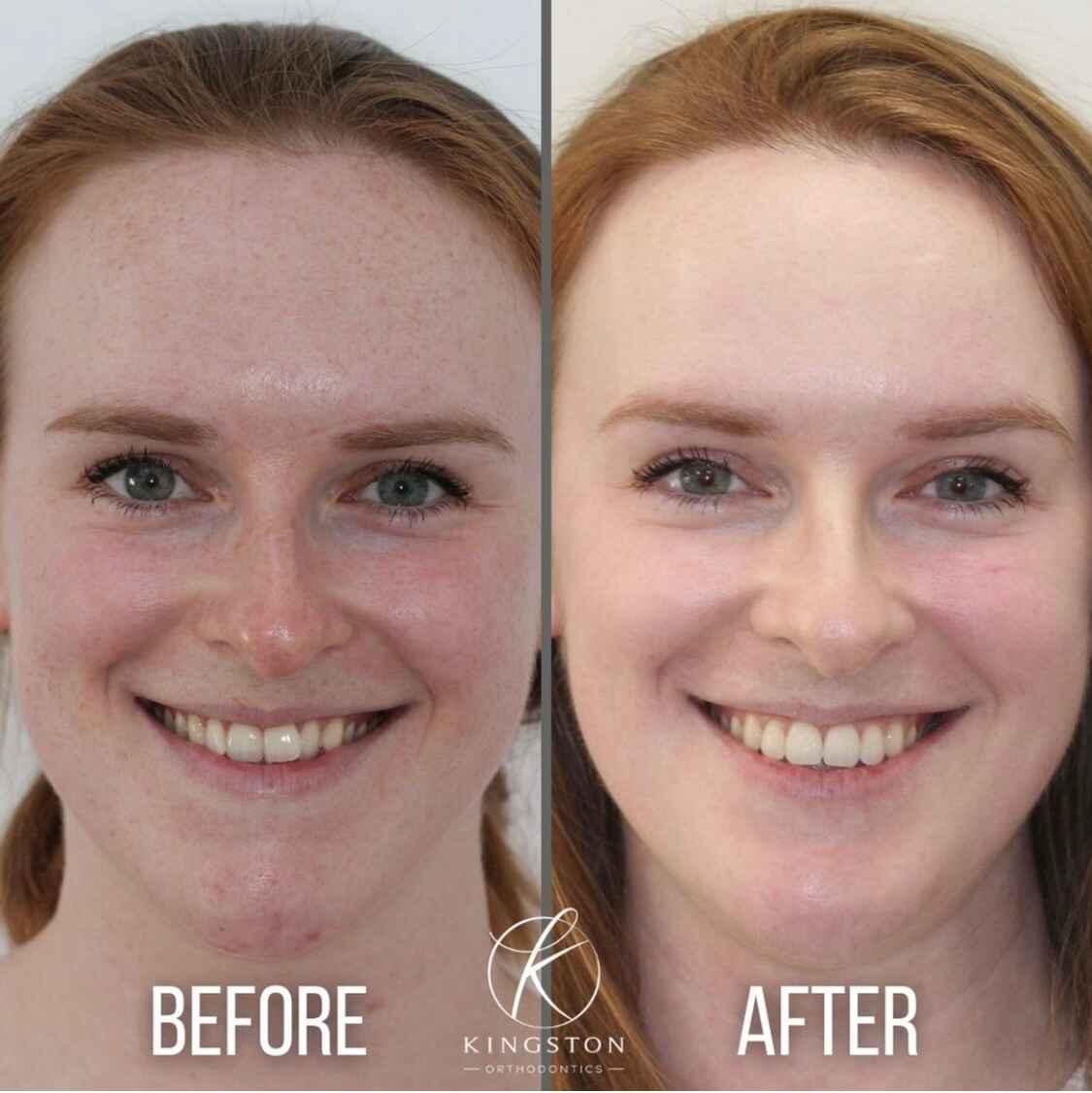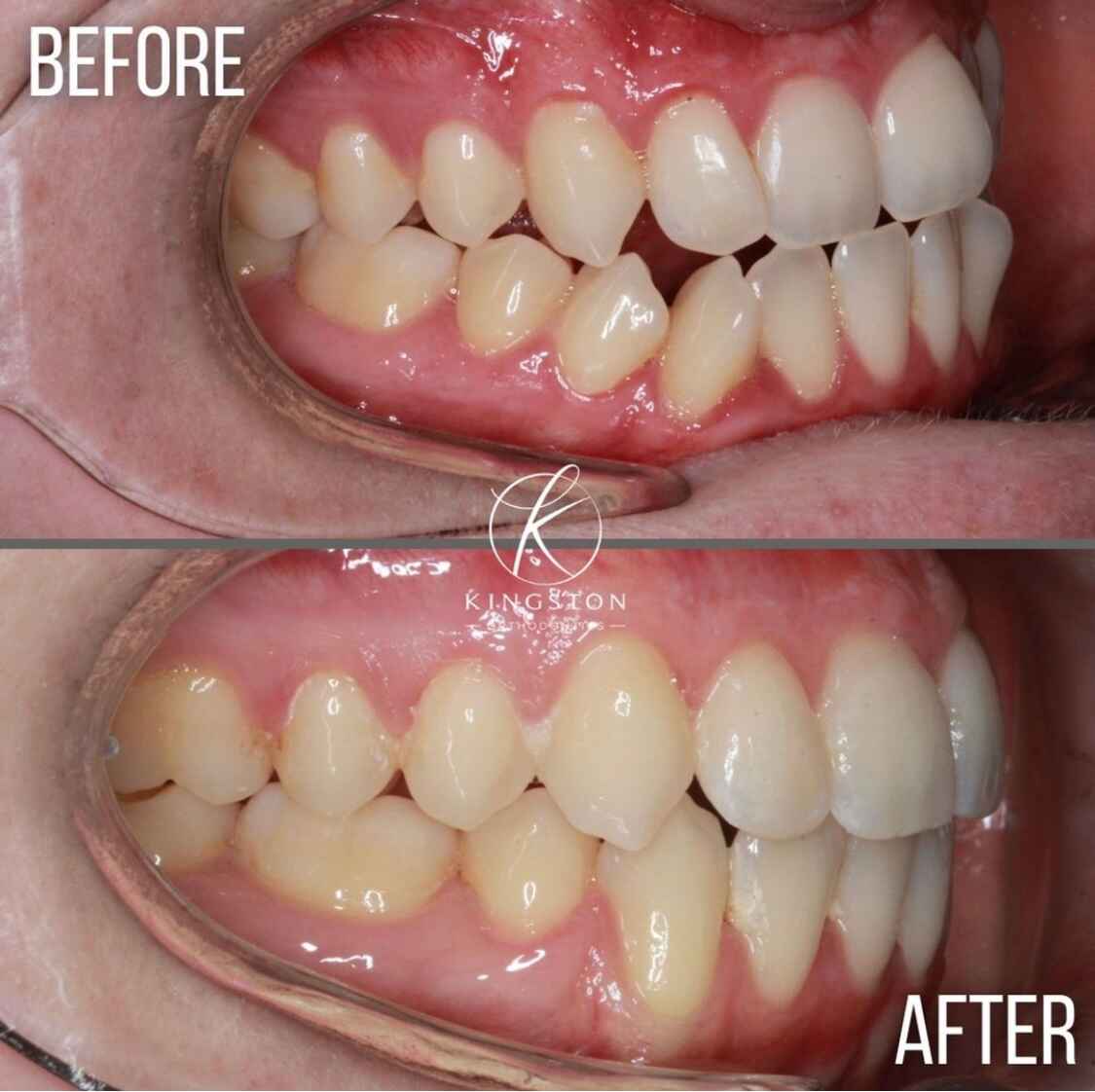
An underbite, a type of teeth misalignment, occurs when the lower teeth protrude beyond the upper front teeth. It ranges from mild, affecting only teeth, to severe, involving the jaw. Causes include genetics, developmental issues, or habits like thumb-sucking or prolonged pacifier use. Underbites can cause chewing and speaking difficulties, increased tooth wear, and sometimes jaw pain and headaches. Treatment typically involves orthodontics and, in severe cases, surgery to realign the jaw.






In an underbite, the lower teeth protrude further forward than the upper teeth, causing the lower jaw and bottom teeth to appear more prominent. This condition is relatively common, affecting approximately 5% to 10% of the population. A large proportion of underbites are due to a growth disharmony between the upper jaw (maxilla) and lower jaw (mandible).While many individuals with a mild underbite may not even be aware of it, in severe cases, the gap between the lower and upper teeth is pronounced and noticeable.
There are a few reasons why you may have an underbite.
Genetics. The shape and position of your teeth and jaw and the way they grow are largely inherited from your parents and family.
Habits in childhood. habits such as digit sucking or use of a dummy for an extended time can alter jaw growth and development.
Crowding. Crowded front teeth can move into an underbite position within the jaw.
Cleft lip and palate. An underbite is also common in children and adults with cleft lip and palate.
Injury. Facial trauma or injury can cause your facial bones or jaw to break. In some cases this can disrupt the position of the jaw and cause an underbite.
Not all underbites are equally severe. In very mild cases, the underbite may not be visibly detectable from the outside. However, in severe cases, the lower jaw protrudes so far forward that it becomes noticeable to others.
Underbites can have more than just cosmetic implications. Even mild cases can lead to wear and tear on the front teeth that meet in an incorrect position, making them more susceptible to chipping or breakage.
In severe cases, underbites can cause significant issues with both your teeth and jaw. These problems might include difficulty in speaking properly and challenges with chewing food when the jaw isn't aligned correctly.
Untreated underbites may cause:

Several options are available to correct an underbite and often, orthodontists may combine two or three of these treatment approaches to achieve the best results. After examining your jaw and teeth, your orthodontist will explain the treatment options and recommend the most suitable one for your specific situation.
Treatment options for underbite correction:
The orthodontist may recommend an upper jaw expander if the underbite results from an underdeveloped upper jaw. These expanders can either be removable or fitted over the back teeth and are designed to gradually push the teeth outward while extending the palate.
Jaw expanders are among the least noticeable underbite treatments but are typically only suitable for growing children. They may become visible when you yawn or laugh. While some people using jaw expanders may experience initial discomfort, this usually subsides within 4-5 days.
Following the treatment, further orthodontic procedures may be required to realign the teeth and bite, followed by the use of retainers.
Reverse pull headgear or a facemask is no longer commonly used to treat underbites but may still be suitable in certain cases.. It is only suitable for growing children with specific underbites. The orthodontist will fit the headgear by resting it on the forehead and chin, then attach it to a retainer or braces using elastic bands to pull the upper teeth and upper jaw into the right position gradually.
A chin cup is again no longer commonly used, it aims to reduce lower jaw growth to aid alignment of the upper and lower front teeth.
Your dentist may recommend wearing fixed braces for underbite correction. The underbite may be correctable with fixed braces alone or may be combined with jaw surgery. Braces are also suitable for correcting other dental issues that are commonly associated with underbites such as crossbites and open bites. Underbite fixed braces can pull, move and twist the teeth into better positions. You may require dental extractions or dental filing (interproximal reduction) as part of this treatment to aid the dental movements needed to correct the underbite, Often elastics are worn between the upper and lower fixed braces to assist with moving the front teeth into the correct position to camouflage the underbite.
The NHS only offers metal braces to children under the age of 18 with an underbite who qualify for treatment. Less noticeable braces option like clear ceramic braces, are only available privately.
Invisalign is suitable for certain underbite treatment. The aligners are virtually invisible, making them a preferred option for most people who do not want more visible and invasive fixed braces. Your orthodontist may recommend only Invisalign to correct your underbite or use it as part of a treatment course that includes jaw surgery.
Before commencing treatment, the orthodontist will examine your jaw and teeth to determine your suitability for fixed braces or Invisalign aligners.
In some cases, having crowded teeth may result in an underbite. The orthodontist may recommend extracting one or more teeth before fitting braces to create more space for the braces to work effectively.
Extractions will be carried out by your dentist or an oral surgeon under local anaesthetic, but occasionally a general anaesthetic may be required, especially when this involves multiple teeth extractions including wisdom teeth.
For severe underbite cases, jaw surgery may be necessary. Management of surgical cases requires a high level of training and expertise, you can rest assured that you will be in very capable hands at Kingston Orthodontics. You will be seen and treated by a Consultant Specialist Orthodontist and Consultant Oral and Maxillofacial Surgeon.
Underbite surgery is a common underbite treatment. If you are concerned about the result of your procedure, ask your orthodontist and surgeon to show you before and after photos of patients who have undergone underbite surgery.
Your orthodontist will fully assess your face and bite and if suitable, will arrange to see you jointly with an oral and maxillofacial surgeon to fully plan your treatment. Underbite surgery requires various stages of combined orthodontics and jaw surgery.
Your orthodontist will provide you with braces which will be in place before, during and after your jaw surgery. Before surgery your braces aim to realign your teeth, this will worsen your bite temporarily with the aim of full bite correction being achieved after jaw surgery.
Your oral and maxillofacial surgeon will fully plan and discuss your jaw surgery with you. This will be carried out under general anesthesia. The surgery may involve repositioning both the upper and lower jaws or may be a single jaw operation only. Carefully planned surgical cuts are made to allow movement of the jaws in the planned direction. Small titanium plates and screws will be placed to hold the bone in position until it fully heals.
Your orthodontist and maxillofacial surgeon will fully explain the changes that you can expect. These changes will include:
There are no visible scars after underbite surgery because all incisions will be inside the mouth. Your fixed braces remain in place before, during and after your jaw surgery. After the procedure, your orthodontist will place elastics between your upper and lower braces to hold your bite in place whilst the bones heal in the right position.
After underbite surgery you will need to take four weeks off work and other activities to allow yourself time to recover.
| Treatment option | Permanent, long term or removable | Duration of treatment | Ideal treatment age |
|---|---|---|---|
| Upper jaw expander | Removable and fixed appliances | 6-12 months | Before age 13 |
| Reverse pull face headgear | Removable | 6 months | Before age ten |
| Chin cap | Removable | 6 months | Before age ten |
| Underbite braces, including Invisalign | Traditional braces are fixed, while others, like Invisalign, are removable | 1 – 3 years | When the majority of adult teeth erupt |
| Tooth extraction | Permanent | One dental visit | When all adult teeth come through |
| Underbite surgery | Permanent | 1-3 years | Over the age of 18 |
The chances of a baby born with a cleft lip and cleft palate also developing an underbite are high. This is because their upper jaw bone and upper teeth haven’t developed properly.
Generally, people with a cleft lip and palate and underbite will require underbite surgery to correct these issues. The cleft team will correct these issues over time with braces and surgery as appropriate. Orthodontists specialising in the management of cleft lip and palate are involved in the multi disciplinary care of these children.
Underbite surgery is available within the national health service for children under the age of 18 diagnosed with a jaw size discrepancy. If eligible for the treatment, the NHS will provide you with the surgery and braces before and after your surgery. Unfortunately this treatment is not available within the NHS for adults.
If you need an underbite treatment, contact Kingston Orthodontics at [email protected] or 0203 002 2501 to book an appointment with our orthodontist.

Spread the cost of any treatment
We are here to help you achieve the perfect – and affordable – smile so please talk to us about our popular interest-free payment plans. Spread the cost and relax – secure in the knowledge that your treatment will take place on time and on budget.